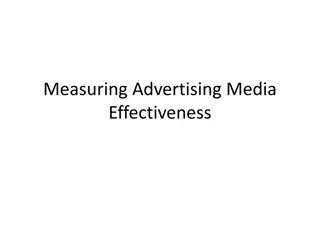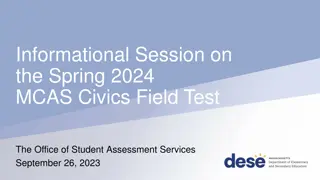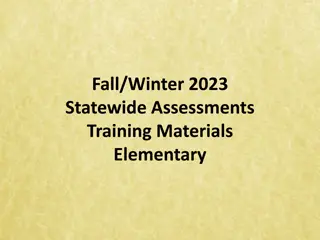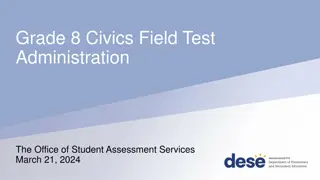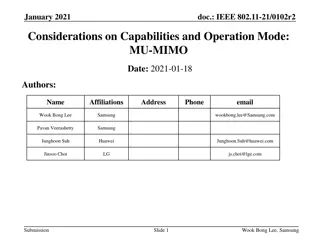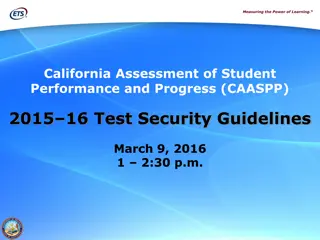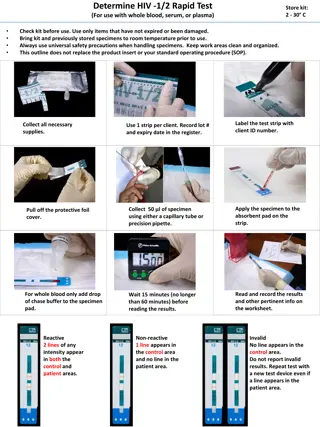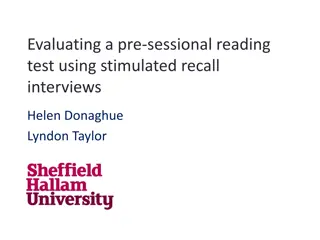
Interesting Facts and Trivia Questions
Discover a collection of trivia questions ranging from nautical terms to historical events and scientific discoveries. Test your knowledge on various subjects and learn new facts. Find out about tough leather used in line whipping, the significance of guidon bearer selection, global seafood markets, natural catastrophes, group cohesion factors, military aircraft history, electricity origins, World War II milestones, and aquaculture practices.
Download Presentation

Please find below an Image/Link to download the presentation.
The content on the website is provided AS IS for your information and personal use only. It may not be sold, licensed, or shared on other websites without obtaining consent from the author. If you encounter any issues during the download, it is possible that the publisher has removed the file from their server.
You are allowed to download the files provided on this website for personal or commercial use, subject to the condition that they are used lawfully. All files are the property of their respective owners.
The content on the website is provided AS IS for your information and personal use only. It may not be sold, licensed, or shared on other websites without obtaining consent from the author.
E N D
Presentation Transcript
1. Commonly used during line whipping, what is the tough piece of leather that fits in a seamans hand and serves a similar purpose as a thimble? A) Fid B) Palm C) Hawser D) Marlinspike
2. Who selects the guidon bearer? A) The SNSI or NSI B) The company commander C) Majority vote of the unit s cadets D) The company petty officer
3. Most of the shrimp, tuna, and lobster caught in the Indian Ocean are canned or frozen for sale in: A) the United States B) Japan C) Taiwan D) Korea
4. In probably the greatest natural catastrophe of history, a 1737 typhoon killed 300,000 people in the : A) Bay of Cadiz, Spain B) Bay of Bengal, India C) Bay of Campeche, Mexico D) Hudson Bay, Canada
5. What can serve as a kind of glue to hold a group together? A) Diversity B) Mutual Respect C) Justice D) Personal dignity
6. What aircraft served for 36 years (1970-2006) as the Navys primary air-to-air superiority platform? A) F/A 18G Growler B) F-14 Tomcat C) EA-6B Prowler D) F/A 18 Hornet
7. The true cause of electricity was found with the development of A) Protons B) Charged particles C) Static electricity D) Atomic theory of matter
When did Hitler invade Poland setting off World War II? A) September 1939 B) March 1939 C) July 1941 D) December 1941
9. Aquaculture involves: A) applying farming methods to grow and harvest sea animals and plants B) extracting mineral resources from sea animals C) applying natural procedures for harvesting sea animals D) examining water for mineral content
10. Where is the earths northernmost magnetic pole? A) North-central Russia B) Northern Canada C) Northern Alaska D) Central Greenland
11. The main reason Napolean sold the Louisiana was to: A) get America on his side to fight England B) finance his war in Europe C) bankrupt the American Treasury D) keep England from controlling it
12. Which basic consideration in evaluating an external threat is the most difficult to assess? A) Reactions B) Capabilities C) Intentions D) Vulnerabilities
13. Who was elected President in November 1952? A) C. Turner Joy B) Douglas MacArthur C) Dwight Eisenhower D) Harry Truman
14. Because expressing strong emotions is important, people should deal with them in constructive ways, such as having a sense of humor, engaging in physical activity, and A) sleeping and resting more than usual B) releasing pent-up emotions by telling off someone C) talking with someone they trust to get it off their chest D) spending a lot of time alone thinking about emotions
15. What is it called when a ships position is determined from the direction and distance travelled from a known starting point? A) GPS navigating B) Radar navigating C) Celestial navigating D) Dead reckoning
16. When the ferrule rests on the ground touching the outside edge of the right show close to the little toe, the position is called: A) Ready Guidon B) Order Guidon C) Present Guidon D) Carry Guidon
17. In an overtaking situation, which vessel is the give-way vessel. A) The vessel that is overtaking the other. B) Neither vessel C) Both vessels D) The vessel that is being overtaken
18. According to ship bell time, the number of bells struck increases by one every half hour, to a total of _________ bells every fourth hour. Then the sequence starts over again. A. Eight B) Six C) Twelve D) Four
19. What general alarm term is used to refer to lighthouses, buoys, beacons, lanterns, and signals that help direct ships? A) Navigational aids B) Coastal support C) Seaway services D) Maritime guides
20. The ________ authorized the payment of construction and operating susidies so American ship owners would consider expansion. This enabled the merchant marine to compete against foreign companies. A) Merchant Marine Act of 1936 B) Jones Act of 1920 C) Maritime Commission of 1951 D) Merchant Marine Act of 1996
21. _________________ is a particular form of gender discrimination. A) Hazing B) Discrimination C) Sexual Harassment D) Fraternization
22. Under the United States Constitution, what basic individual right is common to both military and civilian law? A) Right to equal justice under the law B) Right to civilian legal counsel C) Right to face one s accuser D) Right to jury of peers
23. What kind of court-martial is designed to administer prompt jsutice to enlisted personnel who commit minor offenses? A) Conclusive B) Summary C) Special D) General
24. _____________ refers to the question of with whom jurisdiction in the 12-200 mile economic zone rests, the coastal state, or the international community as a whole. A) Residuum of authority B) Economy of authority C) Province jurisdiction D) Zone jurisdiction
25. Chemistry is the study of A) atmospheric behavior B) the interaction between living organisms and their environment C) matter and how it changes under various conditions D) ancient cultures

